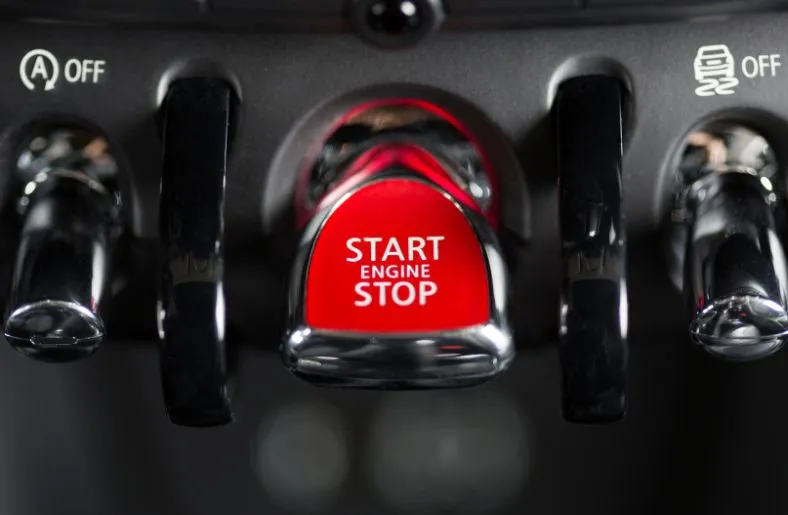When it comes to car maintenance, the ignition system is a crucial component that ensures your vehicle starts reliably. One common question that arises is whether it’s safe and effective to use graphite lubricant on car ignition systems.
In this comprehensive guide, we’ll explore the question that can I use graphite lubricant on car ignition systems, its pros and cons, and safety considerations.
Table of Contents
Car Ignition System
Before delving into the use of graphite lubricant, let’s briefly understand the car ignition system. In most modern vehicles, the ignition system is responsible for creating a spark to ignite the air-fuel mixture in the engine’s cylinders. This spark is essential for the engine to start and run smoothly. The primary components of the ignition system include:
- Spark Plugs: These are the end-points where the spark is generated. The electrodes at the tip of the spark plug create a spark when subjected to a high voltage.
- Ignition Coil: The ignition coil generates and amplifies the voltage needed to create a spark at the spark plugs.
- Distributor: In older ignition systems, the distributor is responsible for distributing high voltage to the correct spark plug at the right time. Many modern cars use distributorless ignition systems.
- Ignition Control Module (ICM): The ICM controls the timing of the spark and ensures that it occurs at the right moment in the engine’s cycle.
- Wiring and Connectors: The electrical wiring and connectors transmit the electrical signal from the ignition system components to the spark plugs.
The efficiency of the ignition system is vital for the vehicle’s overall performance. Over time, various issues can affect this efficiency, including corrosion, moisture, and wear and tear. This is where the use of lubricants like graphite comes into play.
What Is Graphite Lubricant?
Graphite lubricant is a dry lubricant that is made from graphite, a form of carbon. It is known for its excellent lubricating properties, high temperature resistance, and ability to reduce friction. It is commonly used in various applications, such as door locks, hinges, and other mechanical components, to reduce wear and improve the performance of moving parts.
Can I Use Graphite Lubricant on Car Ignition Systems?
Pros of Using Graphite Lubricant on Car Ignition Systems
Now, let’s explore the potential benefits of using graphite lubricant on car ignition systems:
Reduced Friction: One of the primary advantages of graphite lubricant is its ability to reduce friction between moving parts. Applying graphite to the key components of your car’s ignition system can help extend their lifespan and improve their overall performance.
Moisture Resistance: Graphite lubricant is moisture-resistant, which can be particularly beneficial in areas with high humidity or where moisture can penetrate the ignition system components. By reducing the risk of corrosion, it helps maintain consistent spark delivery.
High-Temperature Tolerance: The ignition system can become quite hot during engine operation. Graphite lubricant can withstand high temperatures, ensuring that it remains effective even in these conditions.
Long-Lasting: Graphite lubricants tend to have a longer-lasting effect compared to some other lubricants. This means less frequent maintenance and reapplication, which can save time and effort.
Ease of Application: Applying graphite lubricant is relatively simple and can be done without extensive mechanical expertise. It often comes in easy-to-use forms like sprays or powders.
Noise Reduction: In some cases, the use of graphite lubricant can reduce unwanted noises caused by friction within the ignition system.
Compatibility: Graphite lubricants are typically compatible with various materials commonly found in ignition system components, such as metal and plastics.
Cons of Using Graphite Lubricant on Car Ignition Systems
While there are several advantages to using graphite lubricant on car ignition systems, it’s essential to be aware of the potential drawbacks:
Messiness: Graphite lubricant is a dry lubricant and can become messy when applied. This messiness can be exacerbated by dust and debris sticking to the lubricated parts.
Difficulty in Cleanup: If graphite lubricant is overapplied or not used correctly, it can be challenging to clean up. Excess graphite can accumulate and affect the performance of the ignition system.
Risk of Short Circuits: Graphite is conductive, and if it spreads to the wrong areas, it can cause electrical short circuits or interfere with the proper functioning of the ignition system.
Potential for Clogging: If graphite is applied to moving parts, such as a distributor, it can mix with oil and other contaminants, potentially leading to clogs and reduced functionality.
Variable Effectiveness: The effectiveness of graphite lubricant can vary depending on the specific ignition system and its components. In some cases, it may not provide significant benefits.
Related Guide: How to Remove Graphite Lubricant from Carpet: A Comprehensive Guide (2023-2024)
Safety Considerations
When considering that can I use graphite lubricant on car ignition system, it’s crucial to prioritize safety:
Read the Manufacturer’s Recommendations: Always consult the manufacturer’s recommendations for your specific car model. Some vehicles may have specific requirements or restrictions regarding the use of lubricants.
Use Graphite Lubricant Sparingly: Apply graphite lubricant in moderation. Over-application can lead to the aforementioned issues, such as messiness and short circuits.
Avoid Contact with Electrical Components: Be extremely cautious when applying graphite lubricant near electrical connections or components. Ensure that no graphite comes into contact with electrical wires or circuits to prevent short circuits.
Monitor Performance: After applying graphite lubricant, pay close attention to your car’s ignition system’s performance. If you notice any unusual issues, it’s essential to address them promptly.
Regular Maintenance: Instead of relying solely on lubricants, regular maintenance of your ignition system, such as cleaning and checking for wear and tear, is essential for optimal performance and safety.
Conclusion
Using graphite lubricant on your car’s ignition system can have both advantages and disadvantages. While it can reduce friction, resist moisture, and withstand high temperatures, it should be applied with caution to avoid potential issues like messiness and electrical interference.
Before applying any lubricant to your car’s ignition system, it’s advisable to consult your vehicle’s manufacturer guidelines and consider the specific components of your ignition system. Regular maintenance, such as cleaning and inspections, is equally important to ensure your car’s ignition system functions smoothly.
When used judiciously and with a focus on safety, graphite lubricant can be a valuable tool in extending the life and reliability of your car’s ignition system. However, if you are unsure about its suitability for your specific vehicle, it’s always a good idea to seek advice from a qualified mechanic or your car’s manufacturer.

